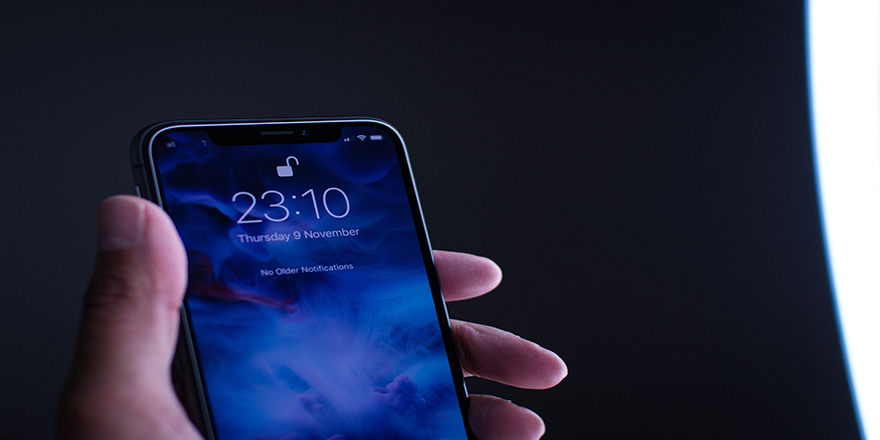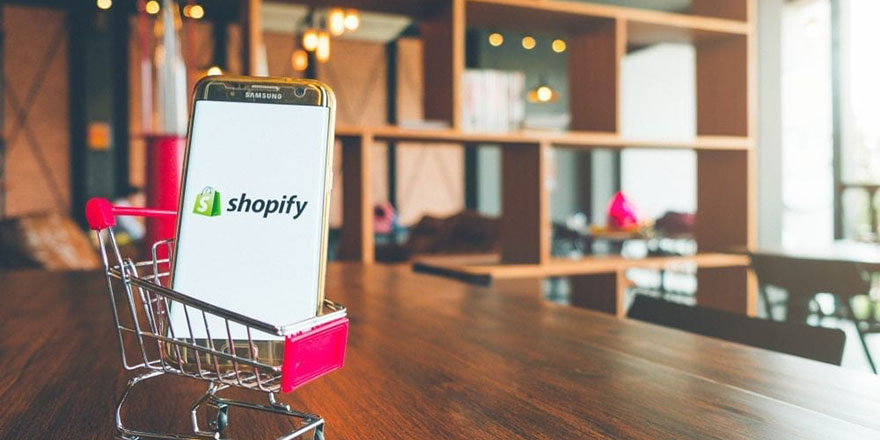
by Don Pingaro | Sep 21, 2019 | Commerce Strategy, System Integrations
Congratulations! You survived the Back to School retail surge. While the true test of eCommerce performance is yet to come, any hurdles you encountered during Back to School should be taken care of well before then. Consider these your warning shots. To help, here are 3 precautionary measures you can take to digitally strengthen your store for the holidays.
1. Stress Test to Avoid Lost Revenue
A wave of more than 6.2 billion shoppers will descend on digital retailers during Cyber Week. Unfortunately, not all businesses are prepared for success…
For example, J. Crew’s site crashed on Black Friday in 2018 and issues persisted throughout the afternoon. Analysts predict the outage cost the company around $780,000 in just five hours. Shoppers flocked to Twitter to complain en masse, causing a firestorm of anger to erupt across the web. This is where the real damage was done. Like a ghost story from holidays past, this is a warning for retailers everywhere to change for the better.

Redstage’s CEO Adam Morris identified the top “holiday rush” issues we’ve helped clients through in years past. Here’s what to watch out for:
1. Slow Site Speed
2. Price Caching
3. Broken or Buggy Checkout
4. Server Overload or Timeout
5. Add to Cart Features Failing
“The holidays are a time of increased profits, but that comes with a huge load on websites,” Morris says, “So if you haven’t done proper stress testing to account for higher demand, you won’t know how your online store is going to react.”Adam Morris, CEO at Redstage
Preparing for the worst now can save you money and your reputation later with one simple step— testing. Skipping this step could spell disaster that leaves the specter of poor service hanging over your reputation for years to come.

2. Your Back-End Checklist at Present
From Thanksgiving to Black Friday through the end of Cyber Week, retailers have a few critical days to rake in as many sales as possible. During this shopping frenzy customers both in-store and online. Regardless of how they buy, your online store (or your app) will more than likely be their first stop. We developed a checklist of what you can do today to ensure your eCommerce site survives Cyber Week.
- Optimize your site’s user experience with A/B testing.
- Check your indexing to avoid price caching.
- Review all error codes to avoid a broken checkout.
- Avoid overload and crashes by scaling your server.
- Double-check key functions to avoid important features failing.
- Complete load testing to prepare for an increase in traffic.
- Utilize an automated monitoring system for real-time updates on 404s and checkout errors.
- Upgrade your payments and security platforms to prevent payment fraud.
- Lastly, be prepared to scale up your support team on the fly. If something goes wrong, even for a few minutes, you’ll need a sizable support team to manage angry customers and correct the issues.
“If you’re not using visitor data to identify the friction points in your checkout, you risk focusing your budget in the wrong places. A data-driven approach to optimization means trusting your analytics even when the message is counter-intuitive.”Oliver Sosinsky, Sr. Solutions Engineer at Redstage
Learn a valuable lesson from LuLu Lemon. Last year, the athleisure brand’s site went down the morning of Thanksgiving Day. Shopper outrage hit Twitter at 8am EST with a “Site is down. Ugh!”
In the first minutes of the shopping event of the year, the brand was stuck, entangled in crisis. Once the site got back online, more errors appeared, causing sales prices for in-cart items reset to regular prices or prevent customers from checking out.
With proper bug monitoring and back-end preparations, this fiasco could have been avoided. Take a page out of our book and start monitoring now. You’ve done the legwork to bring customers to your site, now protect it.

3. Capitalize on the Future
A single visitor doesn’t guarantee a transaction and a single transaction doesn’t guarantee a loyal customer. Flawless mobile experiences will do both, but takes some serious testing.
Conversion rate optimization turns your visitors into customers while ensuring they receive an immaculate customer experience. While no two customers are the same, simple tests can lead to enhancements that remove friction from the checkout and dramatically reduce abandoned carts.
Merchants like LawnmowerTirestore.com took advantage of testing their site before the holiday season and the results were a game changer. By making their checkout button stick to the site’s header and follow users while they scrolled, sales soared with a 29.5% increase in revenue per visitor (RPV) for desktop customers. For mobile, the test yielded a 7% increase in RPV, after only 4 weeks of testing. Now, Lawnmower Tirestore plans to roll-out the feature site-wide to capitalize on their new-found data-driven advantage.
As part of the Mobile Optimization Initiative, retailers can receive checkout tests 100% free. The goal of the initiative is to create a set of best practices for mobile optimization and share our insight with the world. Read more about the initiative here.

Final Thoughts
According to Internet Retailer, 60% of consumers plan to spend 50% or more of their holiday shopping online; spending over $21.6 billion during Cyber week.
It is not too late to prepare. If you start early enough and cover all the bases, you can sit back, relax and watch your revenue grow with measurably less stress. Remember, this is your holiday too. While there’s still time, monitor your site for bugs, load test, A/B test, utilize the data, capitalize on those results, and enjoy some eggnog.
Cheers!

by Latoya Young | Sep 17, 2019 | Commerce Strategy, System Integrations, Web Development
No matter what, customers are always right. Today, they have more power than ever before. As you are well aware, it’s much more likely that your online customers interact with your website via smartphone than desktop. Therefore, their experiences need to be personalized, fast, efficient, and tailored for specific devices. If not, they’ll bounce to the next competitor for a better experience.
Statistics show that 40 percent of users will switch to your competitors after a bad mobile experience. A risk ALL merchants should avoid, especially with the stark rise in mobile sales. In fact, analysts predict that by 2020, 44.7 percent of all retail eCommerce sales will be generated through mobile devices.
Remember, your customers won’t stand for mediocre customer experiences. Your only job is to push them through the checkout in the most frictionless (and secure) manner possible.The digital experience should always mimic the desktop. A business buyer wants to be able to access or check inventory the same way during a commute or at an office computer. According to a 2018 Cyber Week report by Invesp, 32% of consumers changed their mind about making a purchase on mobile, abandoning carts packed with unsold products or sercives. It’s time for a change.
Why 2018’s mobile experiences left money on the table.
Last year, Black Friday’s sales turnout beat expectations by more than 10 percent. However, while many attempted to manage an anticipated mobile surge, conversion rates on the “favorite” shopping device came in dead last during Cyber Week. In the end, over $6.2 billion was spent online from Thanksgiving to the end of Cyber Monday. Mobile orders only accounted for 45% of sales. When you consider that mobile’s share of traffic was 62%, that’s a pretty weak conversion rate.
“In a world where responsive design is trying to give [customers] all the same functionality we have on desktop in mobile, there may be a divergence here where we have to start thinking about different mobile-first customer experiences.”
– Adam Morris, CEO, Redstage
Merchants and B2B companies who don’t start thinking with a “mobile-first customer experience” mentality will be left behind. Of course, it’s ideal to know and understand the buying habits of each customer, but tricky to do without the right technology. Thankfully, free data-driven A/B testing provided by the Mobile Optimization Initiative can help you overcome these barriers. Your customers aren’t going to wait for better mobile experiences, so why should you? Customers want to “click and go.” Lucky for you, implementing optimization is not only easy but the best option for B2B companies and retailers. B2B companies have a more complicated sales funnel that tends to increase aggravation and cart abandoment by 26%. With the Mobile Optimization Initiative, merchants can increase completed purchases dramatically by improving customers’ mobile experience with simple tweaks. Here’s how it works.
The Mobile Optimization Initiative is the ultimate holiday tool!
Last year, we published several articles about mobile optimization to help merchants close the “mobile revenue gap” by optimizing checkout experiences. With some of the tests we’ve run, retailers can cut mobile cart abandonment in half or more on certain devices.
“Optimizing your customer experience thorough data-driven optimization allows you to discover small tweaks that ensure you’re capturing as many sales as possible from the growing pool of mobile buyers.“
– Benjamin Shapiro, Solutions Engineer, Redstage
Those who join the MOI program with Redstage will receive a free checkout funnel assessment, custom test design, experiment implementation, and professional services during the active program. The goal of our global initiative is to help merchants get more revenue from mobile. In turn for the free services, we gather anonymized data about customer habits to create a knowledge-base for best practices in mobile. Learn more about our community proven experiments and sign up here. As the results show, it’s well worth it.
“With the current data collection and analysis tools available, we no longer have to speculate on where to put efforts to improve your site. The data is the guide in both where to focus your efforts, and where to expand after experimenting. Smart A/B testing based on data-driven analysis gives you insights that lead to successful, simple changes that can have a big impact on increasing your revenue per visitor. One recent participant – A lawn mower tire store – saw lifts of 24.9% and 7% RPV on desktop and mobile respectively through a‘sticky cart’ test.“
–Benjamin Shapiro, Solutions Engineer, Redstage
How Soon Should You Start?
The sooner you begin, the better. Participants start gathering testing data immediately, and all it takes is adding a simple tracking tag to your site (less than a minute). If you’re looking for a last-minute boost for your holiday marketing, this is it, and it packs a punch. Our latest test yielded a 25% increase in revenue per visitor.
The Mobile Optimization Initiative puts you ahead of the competition, because the experiments are proven, having been tested over millions of transactions across hundreds of merchant sites.As of December of 2018, experiments from 120 merchant sites generated a collective $22 million in revenue, averaging a 9.28% increase in RPV (extra revenue they would’ve missed without MOI testing). Today, we leverage the data from more than 200 participating merchants to ensure your tests are optimized for success. From this, we’ve created more than 130 standardized experiments to test, so now’s the time to join!
“We were struggling with mobile conversions and the MOI program helped us with the insights and adjustments we needed. This data-driven, forward-thinking program is certainly worth a try.”
– Digital Marketing Coordinator @ Lawnmower Tire Store
Final Thoughts:
Ignoring the trends means you’re missing out on your share of over $500 billion in online sales. With 95% of mobile devices being used to look up local information to visit businesses, it’s your business they should be checking out (pun intended). By this time next year, we expect the number of participants in the MOI to double again, which means it may be too late to get a leg-up on your competitors. Since the experiments work best during high-traffic periods, there’s no better time to test! And don’t worry, the tests automatically notify you if they’re not giving you positive results.
If you’re still not convinced, or don’t know where to start, check out the latest results, case studies, and strategies in our new Holiday Mobile Optimization Ebook here! Good luck this holiday season! Want to learn more about the initiative but before you sign up? Contact us here for a free consultation with our testing experts.

by Latoya Young | Sep 2, 2019 | eCommerce Platforms
Scooch over Amazon! Shopify may be stealing the crown…
It’s not about who did it first, but who did it right, and inclusivity wins every time. Undoubtedly, Amazon is the king of eCommerce. However, small businesses pack a powerful punch, and they want their recognition.
The workforce is changing as technology advances are leading to growth in small businesses. According to the US Small Businesses Administration, there are almost 30 million small businesses in the United States, employing nearly 47.8 percent of U.S workers. In 2014, Forbes reported that 50 percent of the workforce may be freelancers by 2020; with just four months left until the new year, it seems as those analysts knew what the heck they were talking about.
Introducing Shopify’s Fulfillment Center
Details of the fulfillment network were first revealed at Shopify Unite 2019. The network looks promising to merchants of all sizes. However, those who own and operate under a small business will benefit. The responsibilities are endless for a business that has under 50 employees; Shopify is ready to clean up shop. Getting inventory out of a cluttered office or space and into a fulfillment center sounds like a huge relief. Doesn’t it? Merchants no longer have to worry about logistics or fulfillment and can finally focus on building their business.
More power is going to the platforms that facilitate relationships between third-party logistics providers (3PL) and end-users. We saw it in 1998 with Fulfillment by Amazon and now with Shopify. While Amazon and Shopify are no direct competitors. Shopify is diversifying and acquiring consumers through indirect interfacing a.k.a, merchants and 3PL providers. As a result, this formula has over 820,000 third-party merchants doing all the talking for Shopify; bringing in the big buck.
Shopify will win with Inclusivity.
There is no business too small or big. The Fulfillment Network is set to support merchants who ship from 10 to 10,000 packages per day, with hopes of expanding from 3 to 30,000. Craig Miller, the Chief Product Officer at Shopify stated, “the services will be offered to small and medium-sized business owners whose fulfillment processes are not typical or ideal and those whose needs are not being met by their third-party logistics provider.”
“If Shopify can bring an amazon class logistics and fulfillment to small and medium businesses, Shopify could change the world as we know it. Wal-Mart famously changed the retail world with logistics and pushed out many other retail businesses. Amazon re-invented this model for the web, and similarly pushed out many other eCommerce retailers. If Shopify is able to democratize the logistics model, we will enter a whole new realm of competition in retail, dramatically benefiting the consumer, and providing a wealth of opportunity to businesses of all sizes.”
-Adam Morris, Redstage, CEO
With a $1 Billion budget to own and operate fulfillment networks, there are already seven centers. These centers are located in some of the larger states that house major metro cities with the most small businesses such as Georgia, Pennsylvania, California, and Texas. There are also centers located in Ohio, Nevada and New Jersey.
Shopify’s solution is a merchant’s dream come true.
Early last year, Shopify published an article that told us everything we needed to know about 3PL’s and how the market was booming.
The market for 3PLs providers exploded following the birth and exponential growth of eCommerce. Most Fortune 500 (86%) companies and 96% of the Fortune 100 use services like these.
A year later, Shopify found a solution for its’ end users by introducing this network that will also give merchants an opportunity to differentiate themselves.
Artificial Intelligence is at the forefront of the Fulfillment Network. Merchants will find this opportunity hard to pass up with all the features the network includes.
“I don’t want to make life easier,” said no one, ever.
The Shopify Fulfillment network includes the following features:
Custom Packaging and Branding
- The customer experience is now controlled as merchants will have the ability to customize their packaging that compliments their brands’ aesthetics. This is the extra touch merchants need to ensure consistency in their brand even during delivery
Returns and Exchanges
- Merchants have less hassle to worry about returns and exchanges as the fulfillment centers will work to handle all logistics.
Order Fulfillment
- With a 99.5 percent accuracy rate, Shopify is promising merchants that their orders will be picked, packed, processed and shipped within 2 days.
Inventory and Back Office Management
- Through intelligent machine learning the back office keeps track of inventory and provides restock alerts. Customer data syncs across warehouses and sales channels to reduce errors, and lastly, Customers will have access to fast and low-cost delivery.
Final Thoughts:
Everyone wants the underdog to win. While Amazon is focusing on serving only larger businesses. Shopify will focus on ensuring merchants have the opportunity to operate on Amazon’s level delivering the best experience on all levels. There is an application process for those interested in joining the network which requires an assessment based on product types and fulfillment needs. No worries. If you are not accepted, Shopify has provided 3PL checklist just for you.
Your fulfillment network is just one piece of the enterprise puzzle. Dive into our eCommerce platform analysis kit to find out which tech is best for your store! Take the quiz now!
Update: Data reveals that Shopify has recently overtook Ebay, making them the second biggest shopping site after Amazon. Shopify is showing no signs of slowing down. They be stealing the crown quicker rhan we predicted.







Recent Comments